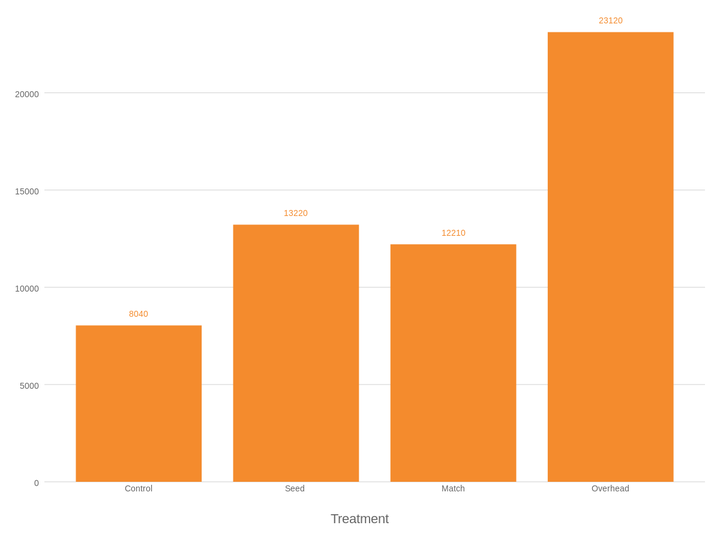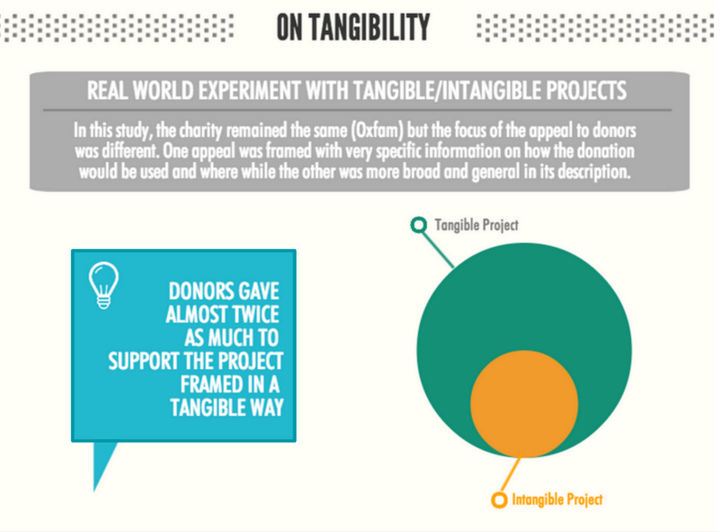Fundraising is both one of the easiest things to do and also one of the hardest. And giving is one of the simplest things to understand and also the most complex. A lot of my work, writing, and thinking probably skews to the harder and complex side of those discussions but fundraising is really just asking people to help solve a problem by doing something that is good for them – giving. And giving is really just helping people in our lives, communities, and world with resources we have.
So every now and then it’s great to pause, step back, and just reflect on what this work and act are really about. I had one of those moments when I discussed giving with Ty Walrod, Co-Founder and CEO of Bright Funds, for The Good Journey Pod. His company was founded on the belief that giving should be easier, more engaging, and more effective and that’s what they work towards each day in all they do. So I want to take a simpler look at each of those three areas and some ways that you can make giving easier, more engaging, and more effective.
Ty Walrod from Bright Funds on Giving
Listen on: iTunes | SoundCloud | Stitcher | Google Play
Make Giving Easier
The (more) obvious part of this is to keep things ‘frictionless’ and dead simple for people when they want to give. Wherever they are. And from whatever device they are on. And that is 100% true. We should be limiting forms, optimizing for mobile, and thinking about the ‘customer experience’ when they give. But that’s after someone has already decided to give, what about when they are on the fence?
That’s where the positioning of your work, projects, and campaigns, as well as additional incentives, can make giving a lot easier for people. Take the 100% model for example, most famously used by charity: water and a topic I discussed with New Story, where a group of donors chooses to cover the “overhead” expenses so other supporters can give “directly” to the “programs” or “real work” (I know that’s a lot of “quotes” but these divisions donors make, and nonprofits perpetuate, should not be real and are a load of BS). A study in Science Magazine found that donors gave almost 3 times more when “overhead” was covered than when it wasn’t.
3x!

“Overhead” covering also increased giving compared to matching funds (by 90%) and seed or lead funding (by 70%). The point here is that covering “overhead” makes giving easier for people. And so does seed funding and matching for that matter when compared to nothing.
Another experiment showed that the same project for the same organization, when framed in a more tangible way, resulted in 2x funds raised!

By understanding the barriers that exist for donors when they want to give – namely trust and a sense that their donation won’t actually do anything (futility) – we can remove them with things like a great value proposition, donor quotes, published financials and impact reports, and extra incentives (overhead, matching, and seed). This eases donor anxiety and will help more people start to fill out that pledge card or land on that donate page and where that simple, frictionless, and user experience focus will help them complete it.
Make giving easier when people choose to donate, absolutely, but make it easier for people to choose to donate in the first place.
Make Giving More Engaging
I think the answer here is just a rephrasing of the sentence:
- “Make Giving More Human” or
- “Make Giving More Personal”
If we can make giving more human/personal then it will be more engaging to people. But what does that look like? Here’s a simple checklist:
- Send emails from humans (human email accounts with normal email signatures
- Talk like a human talking to another human (not a brand talking to hundreds of people)
- Use people’s names (first names or their preference if you know it)
- Know what they’re interested in (and you should work find that out) then cater to it as much as you can
- Tell stories of real people (and preferably one person)
- Share quotes from real people (about their experience in their own words)
- Use images and videos of real people (even if they aren’t perfectly produced)
What is often offputting to donors is when the scrappy organization (even big orgs can be scrappy by the way) that is fighting for a cause they care about starts talking to them like a number in a database, nameless person, or 24-hour ATM. Barack Obama’s 2012 re-election and fundraising campaign is an example of how in a world of multi-million dollar campaigns, a $25 donor in Wisconsin could still feel like their donation was useful and worthwhile. And that’s because a lot of what they did (through a lot of testing) was make Barack and the campaign feel more human. And if a major political party can come across as more human that surely you can.
Or check out NextAfter’s tests on this subject like how a non-designed email leading to greater clicks (I’ve run that test a few times myself and seen a similar result) or how a more candid tone in an email leads to more clicks. This isn’t just a nice idea – let’s sound more human – but, generally speaking, a real, practical strategy that makes your content more engaging.
Make giving more engaging by being more human and personal.
This is part of a much larger conversion but in the spirit of simplicity making giving more effective is about this: do what you said you would do.
Sounds easy right? Well, to do what you said you’d do, you, first of all, have to say what you’ll do! And this is where most efforts around effectiveness, impact, and transparency fall short.
If you don’t tell donors what you’re going to do (in tangible ways) and what the expected outcomes are (in tangible ways) then what do you have to report on to let them know if they, through you, are effective or not? See this is some of that ‘secret sauce’ of these fast growing and hyper-transparent organizations like charity: water, New Story, and Watsi. Yes, they have cool websites, tell stories, and use incentives but they tell you what the project/person you’re funding is and what it’ll do. Then, when it’s done, they tell you. And show you.
charity: water sent me an email with an update 9 months into the project. New Story gives you a video of the family moving into the house that you helped fund/build. And Watsi gives you a story every month of someone who received medical help because of you. But charity: water tells me what the project is and that it will take 18 months. New Story tells me a family will move in. And Watsi tells me people will get medical help before I give. That gives them something to tell me after they’ve done it. It sounds simple I know…
So while there is certainly more conversation to be had about metrics, measurement, impact, and overall effectiveness, keep it simple:
- Tell donors what you will do
- Do what you said you would do
- Tell (and show) them that you did what you said you’d do
That’s effective giving in the eyes of the donor.
Make giving more effective by stating what you’ll do, doing it, and showing the donor that you did it.
So…
Fundraising is hard. Giving is complex. But let’s not make it harder or more complex. Think about how you can make giving easier before someone even chooses to donate. Consider how you can make giving more engaging by being more personal and human. And make giving more effective by doing what you told donors you’d do and then showing them. There are certainly more and different ways to answer those questions but it’s a useful exercise to keep thinking about how you can make giving easier, more engaging, and more effective. Good luck!
This was originally published on re: charity and can be read here.
